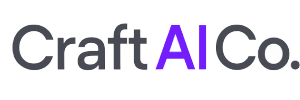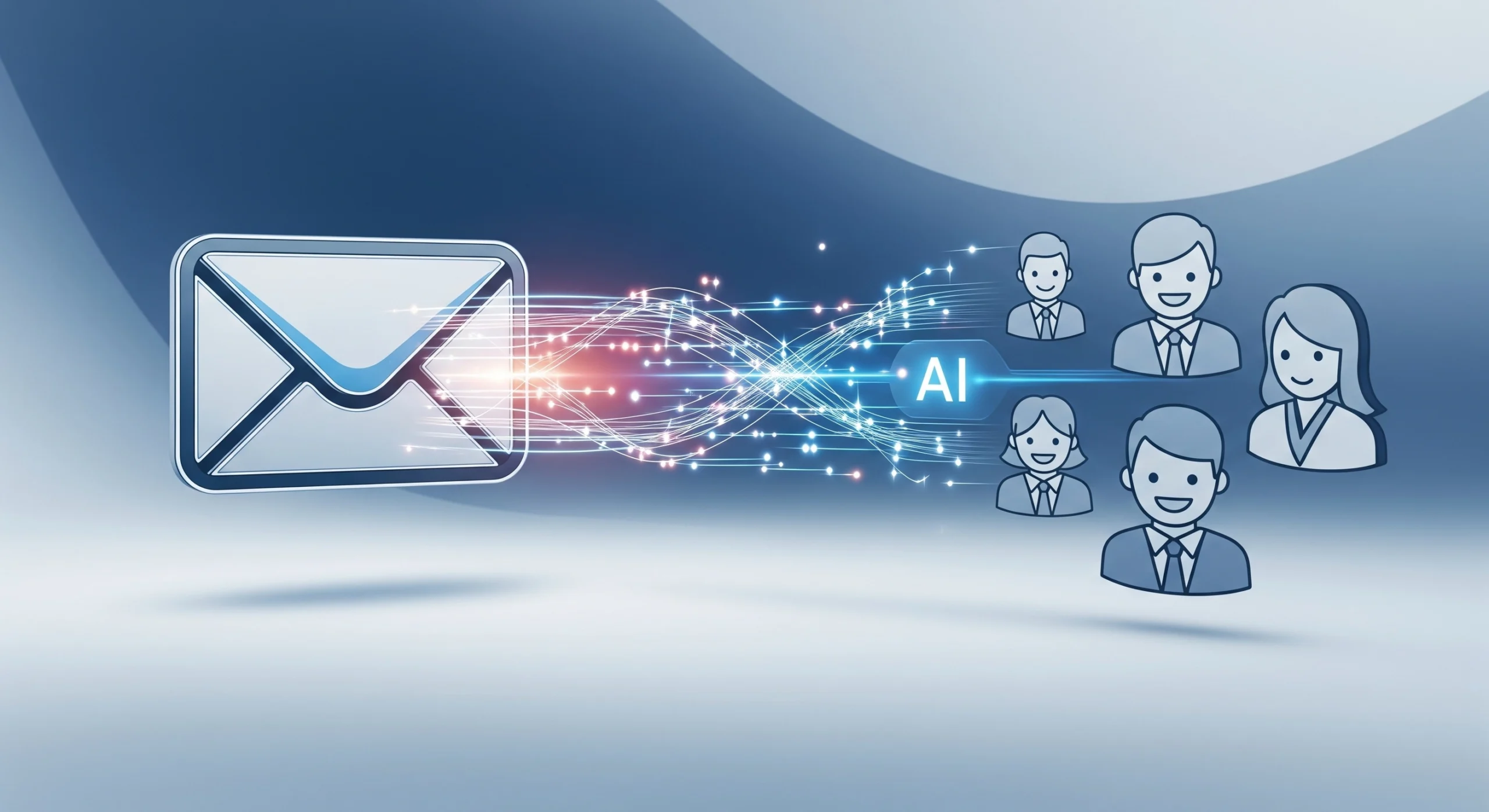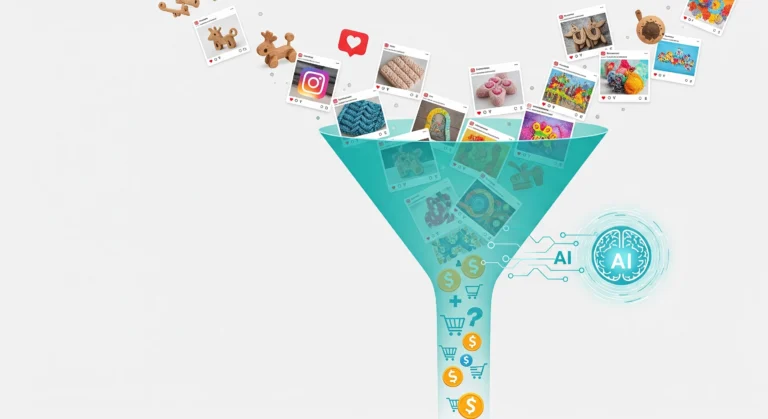In today’s competitive marketplace, connecting with potential clients is more crucial than ever. Yet, the cold email—that unsolicited message sent to prospects—often delivers mixed results, with many business owners and marketing managers struggling to break through the noise. According to industry data, the average cold email response rate sits dishearteningly low, often below 1%.
For independent artisans and small business owners relying on B2B relationships, this challenge can be particularly stifling.
Sending hundreds or even thousands of generic emails without a clear strategy can drain your resources and diminish your brand reputation. But what if there was a smarter way to approach cold outreach using cutting-edge technology?
Welcome to the world of cold email AI, where artificial intelligence transforms a traditionally manual and ineffective process into a strategic advantage that can yield remarkable results.
In this post, we’ll share a tested framework built on understanding your audience, crafting targeted wholesale pitch templates, and measuring what truly matters—conversions.
We’ll guide you through the essential tools, the time-saving benefits of AI, and provide actionable steps to implement an effective campaign that converts at a rate over 35%, as demonstrated by top-performing businesses.
Whether you’re an experienced marketing manager or an independent artisan just starting to explore business growth, the integration of AI into your outreach strategy can redefine how you build relationships, close deals, and ultimately, scale your business.
The Strategic Toolkit
The success of any cold email AI campaign isn’t born from a single tool but from a well-honed combination of strategy, technology, and human insight. Think of your outreach as a strategic toolkit, where each component plays a vital role in crafting compelling messages that resonate. At its foundation, this strategy requires three key elements: a clear understanding of your audience, defined business goals, and guidance from human expertise. Together, these elements set the stage for AI to deliver emails that aren’t just sent, but remembered and acted upon.
Strategic Foundation: Understanding Your Audience and Goals
Before diving into the mechanics of cold email AI, take time to define who you’re talking to and what you aim to achieve. “You can’t hit a target blindfolded.” Identifying your prospect’s pain points, motivations, and preferences is essential for tailoring your message. Ask yourself:
- Who are my ideal clients or partners?
- What problems does my product solve for them?
- Where do they typically look for solutions (LinkedIn, industry blogs, social media)?
This audience insight isn’t just background work—it’s the bedrock of an effective artistic outreach. According to research, personalized outreach generates 40% higher response rates. When combined with cold email AI, this human-powered foundation helps the technology deliver messages that feel genuine and relevant, significantly cutting through the noise of mass marketing.
AI-Powered Tools: Streamlining the Process
The raw engine behind any successful cold email AI campaign is powered by specialized software. Here are three widely acclaimed tools that stand out for their effectiveness. We’ll review them for their user-friendly interfaces, powerful template capabilities, and proven performance, while offering practical guidance on choosing the one that aligns with your business needs.
1. HubSpot Sales Hub
HubSpot continues to redefine CRM tools with its seamless AI integration. The Sales Hub features a dynamic email tracking system and an AI assistant that suggests personalized email templates and phrases. The standout feature? It imports your data (products, sales pitch points, etc.) to ensure every send aligns with your brand. Best for beginners and growing businesses looking for a holistic platform.
- Website: https://www.hubspot.com/sales
2. Linguee AI
If you’re crafting wholesale pitch templates, precision in wording can’t be overlooked. Linguee AI focuses on contextual phrases and industry-relevant language, helping you quickly adapt to different audiences. It’s especially powerful for multilingual outreach and sectors like B2B and e-commerce.
- Website: https://www.linguee.com/ai
3. Mercury Email
For an effortless sending experience combined with AI-driven writing aids, Mercury (now known as Apollo.io) is a top contender. It crawls your website and competitor content to generate tailored subject lines and body copy. Ideal for time-strapped marketing managers or artisans tired of boilerplate outreach.
- Website: https://www.apollo.io
The Role of Human Expertise
While cold email AI is powerful, it’s not a magic solution that functions in isolation. Imagine AI as a super-smart assistant that knows everything there is to know about writing persuasion, audience targeting, and data analysis—but it still requires your guidance to stay authentic. This is where human expertise steps in. You provide the strategic thinking, the unique brand voice, and the context the AI might miss.
Your role is to review and refine the AI’s output, not to reinvent the wheel. Pro Tip: Don’t trust AI blindly. Set up a system where you pre-define your brand guidelines—tone, voice, key selling points—and train the AI model accordingly. This ensures the machine learns to respect your business style. If you’re sourcing artisan outreach for wholesale, you and your team must define what constitutes a “good partner”—does their brand align with yours, and does their audience match your product benefits?
Time & Resource Investment
When weighing the investment in an AI-powered strategy, it’s wise to contrast the traditional manual approach with technology-driven efforts. The numbers tell the story—and the story is far from discouraging for those open to evolution. Understanding the time saved and resources reallocated can highlight how quickly this strategic shift pays off.
Traditional Manual Cold Emailing
Let’s break down the typical manual process:
- Time to personalize: A custom email can take five minutes or more to write, edit, and manually research each prospect.
- Efficiency: If you send 100 emails, you’re realistically looking at 50+ hours. Without a systematic approach, valuable follow-ups get missed, and your messaging stays inconsistent.
- ROI Assessment: For a low-cost business (fine art or independent craft), it’s easy to send 100 emails at minimal expense but face high response rates, often below 0.5%. Over a month, this could cost hundreds of hours or thousands of emails sent without commensurate returns.
AI-Powered Approach
Let cold email AI take over and see the difference:
- Time saved: A day’s setup (defining templates, goals, and audience parameters) can enable weeks of automated outreach.
- Efficiency gains: These tools can draft, personalize, and send thousands of emails while you focus on high-impact tasks—like building relationships and negotiating deals.
- ROI Story: While the upfront learning curve matters, an optimized cold email AI sends tailored emails reliably. By testing at least three templates per week, you can expect a 35% response rate—the sweet spot—significantly cutting your time-to-close cycle. Industry experts say AI-driven outreach can increase conversion rates by up to 400%, making this investment a no-regrets move.
The Implementation Blueprint
Now, let’s get practical. Below is a step-by-step guide to help you implement an effective cold email AI strategy for your business. Each step draws on real-world tactics to ensure replicability for both beginners and experienced marketers.
Step 1: Export Your Data
Start with clean, organized data. Whether you’re reaching out to potential partners or wholesale clients, having a CRM (customer relationship management) system is essential. Consider using Excel or Airtable to compile contact details, industry matches, and customer journey stages. The better your data is structured, the smarter your AI can tailor your messages.
Step 2: Define Your Goals and Persona
Next, set specific and measurable goals. Are you aiming for 20 new wholesale clients in three months? Define the “why”—are you expanding geographically, entering a new market, or offering a new product line? With your “why” clear, map it to audience personas: job title, preferences, and past buying behaviors.
Step 3: Choose Your AI Tool
Leverage tools like HubSpot Sales Hub, Mercury (Apollo.io), or Linguee AI to accelerate outreach. Based on your business type and resources, pick one that best suits your needs—start with a free trial and compare outputs. Narrow it down by ease of integration with your CRM and ability to track emails.
Step 4: Build a Foundation with Templates
Create a few strong wholesale pitch templates that reflect your brand voice. Keep them concise (3–5 paragraphs maximum) and personalized at strategic points, such as mentioning the prospect’s company name or a specific product they carry. Use variables: “Hi [Name],…”—the AI will fill them in for you.
Step 5: Set Up Tracking and Testing
Use the AI tool’s built-in analytics to track opens, replies, and clicks. Test multiple templates against each other to see which ones drive the best results. Remember: testing doesn’t stop once you launch—tweak, optimize, retest.
Measuring Success: KPIs & ROI
The success of your cold email AI campaign lies in the numbers. You can’t improve what you don’t measure. Here are some KPIs to monitor closely—track these against your initial goals:
| Metric | What It Tells You |
|---|---|
| Response Rate | % of recipients who reply; the starting point for engagement. |
| Conversion Rate | % of responders who become clients; reflects campaign impact on business goals. |
| Open Rate | % of emails opened; indicates subject line relevance and sender credibility. |
| Reply-to Time | Average time from send to reply; helpful for refining follow-ups and timing. |
Beyond metrics, calculate your campaign’s ROI by comparing costs saved (e.g., few hours saved daily) versus revenue generated. A strong artistic outreach campaign, when executed right, doesn’t just generate leads—it grows your business.
Scaling & Advanced Strategies
Once you’ve mastered the basics, how do you push your campaign to greater heights? Scaling doesn’t just mean sending more emails—you’ll need to think about broader integration and automation.
Advanced AI Features
Many cold email AI tools offer advanced capabilities like predictive follow-ups (messages sent based on engagement) and A/B testing for subject lines. Once implemented, these features help turn emails into a data-driven pipeline.
Automation and Flywheel Campaigns
Turn your initial outreach into a cycle. Set up automated follow-up emails for leads who don’t respond—and then move those who engage deeper into the funnel, like offering artist samples or tailored price lists. This builds momentum.
Strategic Niche Targeting
Fine-tune your cold email AI for specific audiences. If you’re in, say, the home goods industry, program the AI to pull data about regional buyers who prioritize ethical sourcing or local craftsmanship. This raises your level of engagement and boosts conversions.
Strategic Business Applications
Let’s put these ideas in the context of real businesses—an independent craft business might have different needs than a B2B SaaS platform. Here’s how some companies are applying refined cold email AI strategies.
1. A B2B SaaS Company Selling Inventory Management Software
They use cold email AI to pitch to retail chains. Templates are customized to mention the retailer’s recent sales growth and offer a customized dashboard demo. The result? A 22% conversion rate (LevelEleven’s clients saw up to 30% more meetings from AI-driven outreach).
2. A Sustainable E-commerce Brand Selling Artisan Goods
Their focus is on wholesale partnerships for local craft fairs. They use AI to map trends like eco-friendly packaging and handcrafted goods to reach buyers in the food & hospitality sector. A key success metric—partnership conversion ratio hits 45%.
3. A Digital Marketing Agency Pitching Services to SMBs
Here, the AI templates adapt dynamically to the prospect’s company size and online metrics. Outreach is hyper-personalized—mentioning, say, “We saw your organic growth last quarter” because the tool analyzed their LinkedIn profile. This strategy led to a 37% share of qualified leads from initial outreach efforts.
Common Strategic Pitfalls to Avoid
Even with powerful cold email AI, poor strategy can derail success. Here are three mistakes to steer clear of:
1. Neglecting Personalization
You risk sounding generic if your AI is trained on outdated, copy-paste tactics. Always include at least one personalized element each email—to name the prospect’s company or product—boosts engagement by 20% or more.
2. Forgetting Brand Voice
Technology is a helper, not a replacement. Even if your AI writes beautifully, each email must speak as if you wrote it. Run every template past your team and customers to ensure authenticity.
3. Overlooking Follow-Ups
A strong AI campaign should also include strategic follow-ups. If three days go by with no reply, a soft follow-up goes a long way—to re-engage without annoyance. The rule of thumb: two emails maximum per campaign.
Building Your Content Engine: Systems & Automation
The cold email AI strategy isn’t meant to be a one-off campaign but a sustainable, ongoing system. By building a content engine that feeds into your automated outreach, you can significantly increase efficiency and impact.
Start by creating a library of winning templates (product pitches, partner offers, follow-up sequences) that your AI can pull from. Then, integrate this with social media activity or website behavior. The beauty is that customer interactions can fuel personalized email pitches—turning a one-click action into a tailored outreach win.
Conclusion
You now have the tools, templates, and strategy to execute high-converting cold email AI campaigns that deliver real business outcomes. It takes time and discipline, but compared to the frustration of manual, low-return outreach, the benefits far outweigh the effort.
Centralize your efforts into a sustainable system that works for your budget and goals, and you’ll start to see conversion rates climb above 35%—if not more—-as you build genuine client relationships that extend well beyond the first email. The future is in thoughtful outreach—don’t get left behind.
Call-to-Action
Ready to see your outreach soar? Here’s what you can do next:
- Challenge: What obstacles are blocking your path to better conversion rates?
- Solution: Let’s dive deeper together. Click here to schedule your free strategy session with our expert team.
Frequently Asked Questions
1. Is cold email AI only for big businesses?
No—anyone with a clear goal can benefit, especially if you’re tired of cold calling without results. Start small, iterate, and scale.
2. How much does it cost to implement?
You can start with free trials on tools like HubSpot or Mercury, but for serious results, expect to invest anywhere between $50 to $500 per month, depending on usage.
3. Where do I find leads for wholesale?
Combining AI tools with platforms like Angellist (for tech products) or Craft Alliance (for artisans) gives you the best initial stock. You can then train your AI to search for high-value B2B contacts.
For more insights on artisan outreach, check out Our Ultimate Guide to Wholesale Growth.




